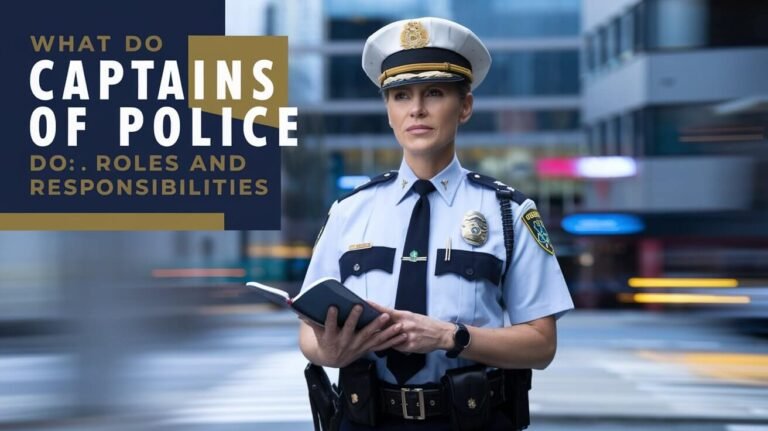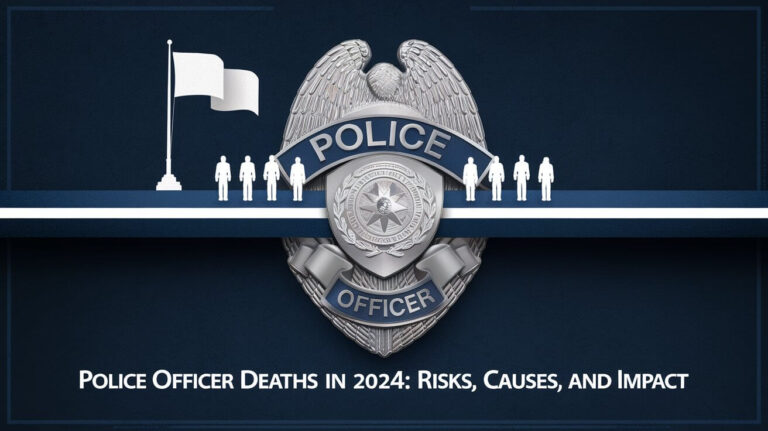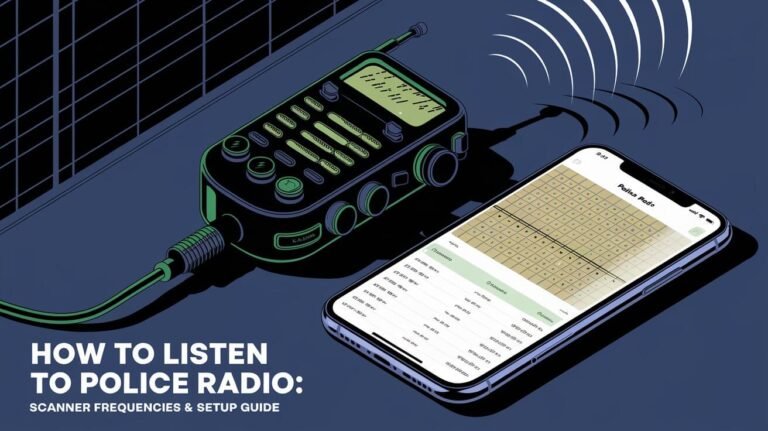1144 Police Code: What It Means in Law Enforcement

Law enforcement agencies use a variety of emergency codes to communicate quickly and efficiently during critical situations. One such code is the 1144 police code, which signifies a “possible fatality / coroner required.” Understanding the meaning behind these codes is crucial for effective law enforcement communication.
The use of specific codes like 1144 helps officers convey complex information rapidly, ensuring a swift and appropriate response to emergencies. This not only aids in managing the situation effectively but also in coordinating with other agencies and emergency services.
Key Takeaways
- The 1144 code is used to indicate a possible fatality.
- It requires the presence of a coroner at the scene.
- Emergency codes are vital for efficient law enforcement communication.
- Understanding these codes is crucial for responding appropriately to emergencies.
- Law enforcement agencies use these codes to convey complex information quickly.
The Meaning Behind 1144 Police Code
When a 1144 code is dispatched, it signifies a serious incident that may involve a fatality, necessitating a coroner’s presence. This code is integral to police department procedures, ensuring that the appropriate response is mounted in situations involving potential deaths.
Official Definition and Significance
The 1144 police code is a specific designation used within law enforcement to indicate a possible fatality. Understanding its official definition and significance is crucial for effective emergency response.
Literal Interpretation
The literal interpretation of the 1144 code is straightforward: it indicates a situation where a fatality has occurred or is likely to have occurred. This interpretation guides the immediate response of law enforcement and other emergency services.
Severity Classification
In terms of severity classification, the 1144 code is considered high-priority. It necessitates a swift and coordinated response from law enforcement, emergency medical services, and potentially, a coroner.
| Code | Literal Interpretation | Severity Classification |
|---|---|---|
| 1144 | Possible Fatality | High-Priority |
Dispatch Protocol for 1144 Calls
The dispatch protocol for 1144 calls involves a coordinated effort among various emergency response teams. This protocol ensures that the right resources are allocated to the scene promptly.
First Responder Actions
First responders are required to secure the scene, assess the situation, and provide initial reports back to dispatch. Their actions are critical in determining the subsequent response.
Secondary Unit Responsibilities
Secondary units, including coroner’s offices and additional law enforcement personnel, are responsible for further investigation and processing of the scene. Their roles are vital in handling the situation appropriately.
Historical Development of Police Codes
The history of police codes is deeply intertwined with the evolution of communication technologies. As law enforcement agencies adapted to new tools and methodologies, their coding systems evolved to improve efficiency and clarity.
Birth of the Ten-Code System
The ten-code system, a cornerstone of police communication, has its roots in early radio technology. Initially designed to simplify and standardize radio transmissions, it quickly became an indispensable tool for law enforcement.
Early Radio Communications
In the early 20th century, as radio became a primary means of communication for police, the need for a standardized coding system became apparent. The ten-code system was developed to address this need, allowing officers to quickly convey complex information.
Military Influence on Code Structure
The structure of police codes was also influenced by military communication practices. The use of numerical codes, for instance, was adopted from military protocols, enhancing the clarity and brevity of messages.
When 1144 Became Standard
The specific code “1144” became an integral part of law enforcement lexicon over time, shaped by significant incidents and formal documentation.
Notable Incidents That Shaped the Code
- Major crimes that required immediate response
- High-profile cases that necessitated coded communication
- Training exercises that reinforced the use of the code
Documentation in Police Manuals
Inclusion of the 1144 code in official police manuals marked its formal adoption. This step ensured that the code was consistently used across different jurisdictions, enhancing interoperability and response times.
1144 Police Code in Daily Operations
In daily police operations, the 1144 code is utilized to streamline dispatch procedures and officer response. This code is crucial for effective emergency management, enabling law enforcement agencies to prioritize calls and allocate resources efficiently.
Dispatch Center Procedures
The dispatch center is the nerve center of police operations, where calls are received and processed. When a 1144 code is received, dispatchers follow specific protocols to assess the situation quickly.
Call Prioritization Methods
Dispatchers use a set of criteria to prioritize 1144 calls, considering factors such as the severity of the incident, the availability of units, and the potential threat to public safety.
Resource Allocation Decisions
Based on the prioritization, resources are allocated to respond to the 1144 incident. This involves assigning the nearest available units and ensuring they have the necessary equipment and backup.
Officer Response Protocols
Officers responding to a 1144 call follow established protocols to ensure a safe and effective response.
Required Equipment and Backup
Officers are required to have specific equipment and backup when responding to 1144 incidents, which may include additional units, specialized gear, or medical support.
Scene Management Tactics
Upon arrival, officers implement scene management tactics to secure the area, assess the situation, and provide assistance as needed.
| Protocol | Description | Responsibility |
|---|---|---|
| Call Prioritization | Assessing the severity and urgency of 1144 calls | Dispatcher |
| Resource Allocation | Assigning units and equipment based on priority | Dispatcher/Officer |
| Scene Management | Securing the scene and providing assistance | Officer |
Geographic Differences in 1144 Code Usage
The 1144 police code, while standardized, exhibits diverse applications and interpretations across various parts of the country. This variation is largely due to regional differences in law enforcement needs, communication protocols, and historical practices.
East Coast vs. West Coast Interpretations
The interpretation of the 1144 code can differ between the East Coast and West Coast, influenced by local law enforcement priorities and the nature of emergencies typically encountered.
Major City Adaptations
In major cities like New York and Los Angeles, the 1144 code is often used in high-density, fast-paced environments. For instance:
- In New York City, it is used for specific types of emergency calls that require immediate police response.
- Los Angeles has adapted the code for use in high-crime areas or during specific events.
Rural Area Applications
In contrast, rural areas may use the 1144 code less frequently due to different crime patterns and emergency response needs. For example:
- Rural departments might use it for isolated incidents or emergencies where a rapid response is still necessary.
- The code’s application can be more flexible, adapting to the unique challenges of rural law enforcement.
International Equivalents
The concept of the 1144 code has international equivalents, reflecting global law enforcement communication needs.
Canadian Border Considerations
Along the U.S.-Canada border, law enforcement agencies on both sides often coordinate and may use similar codes or have protocols for cross-border emergencies.
Mexican Border Protocols
Similarly, along the U.S.-Mexico border, there are specific protocols in place for handling emergencies and coordinating with Mexican law enforcement, which may involve adaptations of codes like 1144.
Understanding these geographic and international differences is crucial for effective law enforcement communication and cooperation, both within the U.S. and across its borders.
Emergency Response Dynamics for 1144 Situations
The dynamics of responding to 1144 situations demand a comprehensive understanding of first responder coordination and time-critical factors. Effective emergency response is a multifaceted operation that requires the integration of various services.
First Responder Coordination
Coordination among first responders is crucial in managing 1144 situations effectively. This involves:
- Clear communication between police, fire, and medical units
- Predefined protocols for emergency response
- Training exercises to ensure interoperability among different agencies
Police-Fire Department Interface
The interface between police and fire departments is critical in 1144 situations, requiring seamless coordination to assess and manage the emergency effectively. Joint training exercises can significantly enhance this interface.
Medical Team Integration
Integrating medical teams into the response effort is vital for providing timely medical assistance. This involves dispatching the right medical resources to the scene promptly and ensuring that they are aware of the situation’s specifics.
Critical Time Factors
Critical time factors play a significant role in the outcome of 1144 situations. Understanding these factors is essential for responders to make informed decisions quickly.
Golden Hour Principles
The “Golden Hour” principle is particularly relevant in emergency responses, emphasizing the importance of providing medical care within the first hour of an incident. Rapid response and transportation to medical facilities are crucial during this period.
Escalation Thresholds
Understanding escalation thresholds is vital for responders to anticipate and prepare for potential escalations in 1144 situations. This involves continuous assessment and adjustment of response strategies as needed.
Debunking Myths About the 1144 Police Code
Misconceptions about the 1144 police code abound, largely due to its portrayal in media and entertainment. The actual usage and significance of this code in law enforcement operations are often misunderstood by the general public.
Hollywood vs. Real-World Usage
The portrayal of police codes in movies and TV shows can be misleading, creating a disconnect between public perception and reality.
Popular Culture Misrepresentations
Popular culture often exaggerates or distorts the meaning of police codes for dramatic effect. For instance, some films or TV shows might use the 1144 code in a context that is not representative of its actual use in the field.
Actual Field Applications
In reality, the 1144 police code is used for specific situations that require a standardized response. Understanding its actual application can help clarify its importance in law enforcement.
Public Perception Challenges
The public’s understanding of police codes like 1144 is influenced by media coverage, which can sometimes perpetuate myths or inaccuracies.
Media Coverage Impact
- Media coverage can sensationalize certain aspects of police work, including the use of codes.
- This sensationalism can lead to a distorted public perception of what the 1144 code signifies.
Educational Opportunities
Educating the public about the true meaning and use of the 1144 police code can help bridge the gap between law enforcement and the community. By understanding the role of police codes, citizens can gain a deeper appreciation for the complexities of police work.
Associated Police Codes in the Same Family
Understanding the codes related to 1144 provides insight into police communication protocols. The 1144 police code is not used in isolation; it’s part of a broader system of codes that law enforcement agencies utilize to convey different types of information efficiently.
Numerical Sequence Relationships
The 1144 code is surrounded by other codes that share similar numerical sequences, indicating related or sequential events. Examining these codes helps in understanding the context and usage.
Preceding Codes (1140-1143)
Codes preceding 1144, such as 1140-1143, often relate to different aspects of the same situation or similar incidents. For instance, 1140 might be used for a specific type of call that is distinct from but related to the circumstances described by 1144.
Subsequent Codes (1145-1149)
Similarly, codes following 1144, like 1145-1149, are used for subsequent actions or related incidents. These codes help in creating a sequence of events or responses.
Situational Groupings
Police codes are also grouped based on the situation or the level of emergency. Understanding these groupings is crucial for effective communication.
Emergency Level Codes
Some codes are designated for emergency situations, requiring immediate response. These codes are critical for officer safety and public safety.
Officer Safety Codes
Codes related to officer safety are vital for ensuring that law enforcement personnel are aware of potential risks. These codes help in coordinating responses to protect officers.
By understanding the related police codes and their sequences, law enforcement can enhance their communication efficiency and response to various situations.
Police Communication Efficiency Through Codes
The use of specific codes, such as 1144, has revolutionized police communication, making it more efficient and secure. Police codes enable law enforcement agencies to convey complex information quickly and accurately, which is critical in high-pressure situations.
Radio Traffic Management
Effective radio traffic management is crucial for maintaining clear communication channels. Police codes help in managing radio traffic by reducing the amount of data transmitted over radio channels.
Bandwidth Conservation
Using standardized codes, police departments can conserve bandwidth, ensuring that critical information is transmitted promptly. This is particularly important during emergencies when radio traffic increases significantly.
Clear Channel Priorities
Codes like 1144 help in prioritizing channel usage, ensuring that emergency communications are given precedence over routine transmissions. This helps in maintaining clear channels for critical communications.
Officer Safety Benefits
Police codes also contribute significantly to officer safety by providing a means of covert communication and rapid response activation.
Covert Communication Options
Codes can be used to convey sensitive information discreetly, reducing the risk of compromising officer safety. For instance, a code can signal a need for backup without alerting potential suspects.
Rapid Response Activation
In emergency situations, codes enable rapid response activation, allowing officers to quickly respond to threats. This swift action can be critical in saving lives and resolving situations effectively.
| Code Type | Purpose | Benefit |
|---|---|---|
| 1144 | Emergency Situation | Rapid Response |
| 10- Codes | Standardized Communication | Efficiency and Clarity |
| Situational Codes | Specific Incident Reporting | Accurate Information |
Technological Evolution and Police Codes
The integration of technology in law enforcement has revolutionized the way police codes are used. This technological evolution has enhanced the efficiency and coordination of police responses. By leveraging advanced systems, law enforcement agencies can now respond more effectively to emergencies.
Computer-Aided Dispatch Systems
Computer-aided dispatch (CAD) systems have become a cornerstone in modern policing. These systems enable dispatchers to quickly process calls and allocate resources. CAD systems improve response times by automating many processes.
Automated Response Algorithms
Automated response algorithms within CAD systems help in prioritizing calls based on severity and allocating the nearest available units. This ensures a swift and appropriate response to emergencies. By analyzing data, these algorithms can predict and prepare for potential hotspots.
Data Tracking Capabilities
CAD systems also offer data tracking capabilities, allowing law enforcement to monitor response times, call volumes, and other critical metrics. This data is invaluable for strategic planning and resource allocation. It helps in identifying trends and areas for improvement.
Mobile Device Integration
The integration of mobile devices into police operations has further enhanced the use of police codes. Officers can now receive and respond to dispatches more efficiently using smartphones and other mobile devices.
Officer Smartphone Applications
Smartphone applications designed for law enforcement enable officers to access critical information on the go. These apps can provide real-time updates on calls, suspect information, and other vital data. This mobility enhances officer safety and response effectiveness.
GPS Coordination Features
GPS coordination features on mobile devices allow for precise location tracking, ensuring that the nearest available officer is dispatched to an emergency. This feature is particularly useful in rural or unfamiliar areas. It also aids in resource allocation and tactical operations.
Embracing technological advancements, law enforcement agencies can continue to improve their response to emergencies and overall operational efficiency. The future of policing looks to further integrate technology, enhancing the role of police codes in daily operations.
Legal Framework Surrounding 1144 Incidents
When an incident is classified under the 1144 code, it triggers a series of legal protocols that law enforcement agencies must follow. These protocols are designed to ensure that incidents are handled consistently and that all necessary documentation is completed.
Documentation Requirements
The documentation process for 1144 incidents involves several key components. Two critical aspects are body camera policies and report writing standards.
Body Camera Policies
Body camera policies dictate how footage is captured, stored, and used as evidence. Proper handling of body camera footage is crucial for maintaining the integrity of the evidence.
Report Writing Standards
Report writing standards ensure that all incidents are documented thoroughly and consistently. This includes details about the incident, actions taken, and any subsequent investigations.
Courtroom Relevance
The documentation and evidence collected during a 1144 incident are often used in court proceedings. Understanding the courtroom relevance of this evidence is vital.
Evidence Chain Considerations
Maintaining the chain of custody for evidence is critical to its admissibility in court. Any breaks in the chain can lead to evidence being deemed inadmissible.
Expert Testimony Parameters
Expert testimony can play a significant role in cases involving 1144 incidents. Experts can provide context and insights that help jurors understand complex aspects of the case.
| Documentation Aspect | Description | Courtroom Relevance |
|---|---|---|
| Body Camera Footage | Visual evidence captured during the incident | Used to corroborate witness statements and officer accounts |
| Report Writing | Detailed written account of the incident | Provides a permanent record of the incident and actions taken |
| Evidence Chain | Documentation of evidence handling and storage | Ensures evidence is admissible in court |
Conclusion
The 1144 police code plays a crucial role in law enforcement communication, serving as a standardized code for specific incidents. Throughout this article, we’ve explored the various aspects of this code, from its official definition and dispatch protocols to its historical development and geographic differences in usage.
A summary of the key points reveals the significance of the 1144 police code in daily operations, emergency response dynamics, and police communication efficiency. The code’s importance is further underscored by its role in officer safety and its integration with technological advancements in law enforcement.
The police code significance extends beyond operational efficiency, as it also influences public perception and legal frameworks surrounding incidents coded as 1144. By understanding the 1144 police code and its applications, we gain insight into the complexities of law enforcement practices and the importance of standardized communication in emergency response situations.
FAQs
What does the 1144 police code signify?
The 1144 police code is used to indicate a specific situation or incident that requires a particular response from law enforcement, and its meaning can vary depending on the jurisdiction and context.
How do dispatch protocols for 1144 calls work?
Dispatch protocols for 1144 calls involve a standardized procedure for handling and responding to incidents coded as 1144, including alerting first responders and secondary units, and coordinating their actions.
What is the historical background of the ten-code system?
The ten-code system, which includes codes like 1144, originated as a way to simplify and standardize police communication, and has evolved over time to accommodate changing law enforcement needs.
How is the 1144 police code used in daily law enforcement operations?
The 1144 police code is used in daily operations to quickly convey critical information between dispatch centers and officers, facilitating efficient response and scene management.
Are there regional differences in the interpretation of the 1144 police code?
Yes, the interpretation of the 1144 police code can vary between different regions, such as the East and West Coasts, and between urban and rural areas, as well as internationally.
How do first responders coordinate their response to 1144 situations?
First responders coordinate their response to 1144 situations through established protocols and communication procedures, ensuring a swift and effective response to the incident.
What are some common misconceptions about the 1144 police code?
Common misconceptions about the 1144 police code include its portrayal in Hollywood and the media, which can differ significantly from its real-world usage and significance.
What other police codes are related to the 1144 code?
Other police codes related to the 1144 code include those that fall within the same numerical sequence or situational grouping, such as emergency level codes and officer safety codes.
How do police codes like 1144 contribute to efficient communication?
Police codes like 1144 contribute to efficient communication by providing a standardized and concise way to convey critical information, reducing radio traffic and enhancing officer safety.
How has technology impacted the use of police codes like 1144?
Technology, such as computer-aided dispatch systems and mobile devices, has enhanced the use of police codes like 1144 by improving response efficiency, coordination, and accuracy.
What are the legal implications of incidents coded as 1144?
Incidents coded as 1144 have specific legal implications, including documentation requirements, courtroom relevance, and the role of evidence in legal proceedings.
How does the 1144 police code impact officer safety?
The 1144 police code can impact officer safety by providing a rapid and standardized way to alert officers to potential hazards or high-risk situations, enabling them to respond accordingly.






